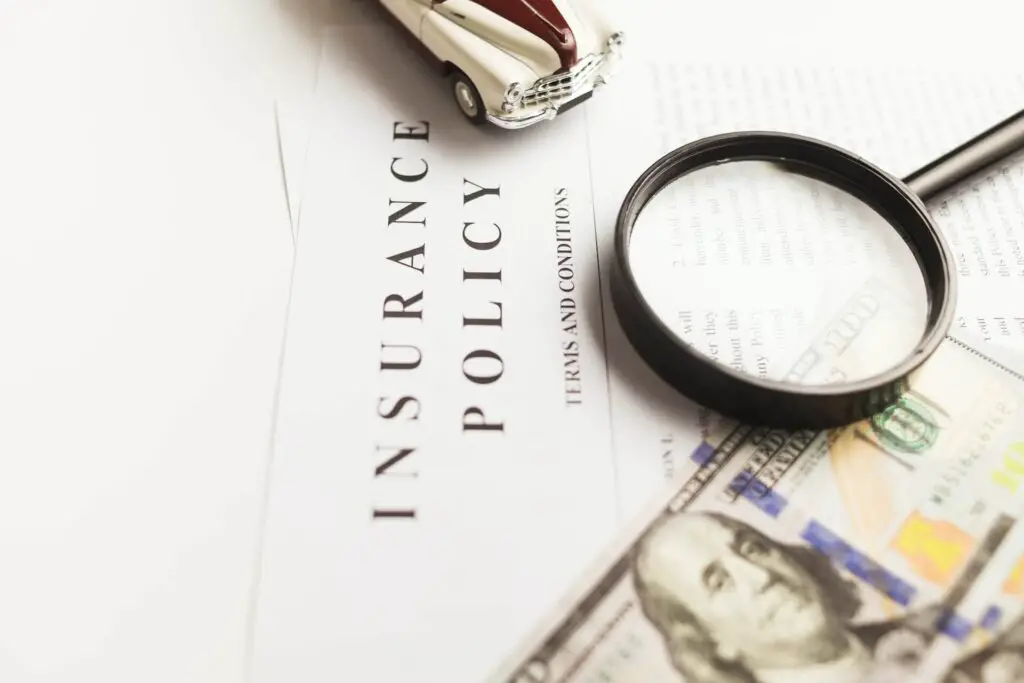Your teenager, keys in hand, a mile-wide grin, ready to hit the road. It’s a milestone moment until you remember the looming quest for auto coverage. Suddenly, you’re not just teaching them to parallel park but also wondering – what is the cheapest way to get car insurance for a teenager? Full of savvy tips and insider knowledge, here’s a survival guide for parents armed with strategies to prevent your bank account from hitting empty.
What Is the Cheapest Way to Get Car Insurance for a Teenager?
Regarding cheap car insurance for teenagers, there’s no one-size-fits-all coverage. Encouraging safe driving habits, choosing the best vehicle for new drivers with a solid safety record, and taking advantage of available discounts, such as for good grades, are great strategies to reduce costs. Also, adding them to an existing family policy, depending on your own rates, can turn out to be especially cost-effective.

Why Is Affordable Teen Car Insurance So Hard to Find?
As you start to shop around different policies for your teen, you’ll soon find a common theme. It seems like insurers have their fingers poised over the “expensive” button as soon as they hear the word “teenager.” Why is that?
Well, imagine a teen behind the steering wheel, and you’ll start to realize why insurers might start sweating. Statistically speaking, teens and accidents go together like peanut butter and jelly – except it’s not a combo anyone’s craving. According to the American Automobile Association (AAA), the riskiest driving age is between 16 and 17.
It’s simple – young drivers, with their limited experience, are more prone to making mistakes, leading to higher accident rates. Insurers, with their eyes on these statistics, adjust premiums accordingly. It’s not personal – it’s just math.
How Insurance Companies Calculate Premiums for Teenagers
When it comes to setting premiums for young drivers, companies mix a cocktail of factors, each with its own method. Here are the usual aspects that are taken into account:
- Age – teens are at the starting line of their journey, and with less experience and knowledge about driver’s responsibilities, the risk of accidents is higher,
- Driving experience – less time behind the steering wheel means fewer opportunities to prove you can handle the road,
- Education – good grades can signal to insurers that a teen is responsible, potentially leading to lower rates.

Proven Strategies for Lowering Teen Car Insurance Premiums
Now, you might be feeling like the sky-high rates should relegate your kid to the passenger seat indefinitely. However, there’s no need to take away their keys just yet. The game might be rigged against these young drivers, but with a few strategic moves, you can level the playing field and cut down vehicle expenses. Here are the most efficient routes:
Choosing the Right Vehicle for Your Teen
The quest for lower premiums begins with the right four-wheeler. In the eyes of insurers, not all vehicles are created equal. Opting for a ride with a solid safety record, not too old but far from brand new, can strike the perfect balance between reliability and affordability.
Safety features are your best friends here – they’ll be particularly cost-effective once it’s time to discuss coverage. Steering clear of high-performance vehicles, which scream “risk” to insurers, can also help keep those premiums in check. It’s all about finding a vehicle that’s as sensible as it is safe.
Comparing Quotes From Multiple Insurers
Don’t put all your eggs in one insurer’s basket. The best car insurance for young drivers is found by shopping around. Different companies have different ways of assessing risk, and what’s costly with one might be more reasonable with another.
Using online tools to compare quotes can streamline this process, making it easier to weigh your options side by side. Remember, loyalty is commendable, but when it comes to coverage, flexibility can often lead to savings.
Taking Advantage of Teen Driver Discounts
Unlocking the treasure trove of car insurance discounts for teens can significantly dent those daunting premiums. Many insurers offer discounts for good grades, reflecting the correlation they see between academic responsibility and driving behavior. It’s like getting a two-for-one deal on good habits.
Additionally, enrolling your teen in a defensive driving course not only equips them with valuable skills but can also lead to lower rates. It’s about proving your teen is less of a gamble and more of a sure bet. Keep an ear to the ground for these opportunities, as they can make a substantial difference in the overall ownership costs.
Adding to the Parent’s Policy vs. Getting a Separate Policy – What’s the Best Route?
Deciding whether to add your teenager to your existing policy or to spring for a separate policy is a crossroads many parents face. Each option has its own map of benefits and potential potholes. Generally, adding to the parent’s policy is the more wallet-friendly route. This option also means that your teen can benefit from the potentially higher coverage limits and established customer discounts you’ve accrued over time.
On the flip side, opting for a separate policy might make sense in certain scenarios. If your teen drives a model that’s significantly older or less valuable than the family vehicle, a separate policy could be tailored to fit the specific needs and value of that four-wheeler, possibly leading to lower premiums. Moreover, if your own driving record is less than stellar, keeping your teen’s policy separate might shield them from the premium hikes your history could impose.

It’s All About Education – It Leads to Both Safe and Affordable Roads
Completing a driver’s education course is like equipping your teen with a GPS for the road of life. It prepares them for the journey ahead, ensuring they’re better navigators and safer companions on the famous US routes.
This educational foundation not only boosts their confidence and competence behind the steering wheel but also signals to insurers that your teen is committed to safe driving. As a result, many offer discounts for drivers who’ve completed these courses, acknowledging the reduced risk with lower rates.
Make Sure to Do Your Best to Encourage Safe Driving Habits
Safe driving extends beyond obeying traffic laws – it encompasses awareness, patience, and responsibility on the road. Instilling these values can help teens develop a solid foundation for a lifetime of safe driving. Regular discussions about road safety, setting a good example behind the wheel, and possibly utilizing apps that monitor driving behavior can reinforce these habits.

Read the Fine Print Now to Avoid Potential Problems in the Long Run
Diving into the nitty-gritty of your coverage policy isn’t everyone’s idea of a good time, but think of it as the roadmap to navigating future landscapes. Without this knowledge, your teen could find themselves in a sticky situation down the line, facing unexpected out-of-pocket costs or insufficient coverage. So, before you sign on the dotted line, make sure you’re equipped with all the facts. Here’s a checklist to guide you through the fine print:
- What types of incidents are covered? Is it just collisions, or does it include theft, vandalism, and natural disasters?
- Are there any policy exclusions you should know about?
- How much do you need to pay out of pocket before coverage kicks in?
- What are the maximum amounts your policy will pay out for different types of claims?
- What does the claiming process look like, including any deadlines or required documentation?
Read up on the Role of Deductibles and Coverage Limits
Deductibles are the amount you agree to pay before the insurance coverage kicks in after a claim. Opting for a higher deductible can lower your premium, but it means more upfront costs when you file a claim.
Coverage limits are the maximum amounts your insurer will pay for a claim. While it might be tempting to choose lower coverage limits for a cheaper premium, this can leave you exposed to significant financial risk if you’re involved in a major accident. Striking the right balance between deductibles, coverage limits, and premium costs is key to ensuring you’re both financially protected and not overpaying for coverage.

Cruising Into Savings and Sealing the Deal for Your Teen’s Journey
From choosing the right vehicle to understanding the ins and outs of your policy, it’s clear that a bit of knowledge and strategy can go a long way. Remember, the journey to finding that perfect deal is like teaching your teen to drive – it requires patience, attention to detail, and a willingness to learn from the road ahead. So buckle up and enjoy the ride!
Frequently Asked Questions About Car Insurance for a Teenager
What Is the Cheapest Way to Insure a Teenage Driver?
The cheapest way to insure a teenage driver often involves adding them to an existing family policy rather than setting up a separate one. This method leverages the broader coverage and potentially lower rates based on the parents’ driving history and credit scores.
How Can I Reduce My Teenager’s Car Insurance Rates?
To reduce your teenager’s rates, encourage them to maintain good grades for a possible discount, enroll them in a defensive driving course, and choose a vehicle with a strong safety record. Opting for a higher deductible can also lower premiums.
Is It Better for a Teenager to Have Their Own Car Insurance Policy?
For teenagers, it’s usually better to be added to their parent’s policy to benefit from lower rates. Having their own policy is typically more expensive due to their lack of driving experience and higher risk profile.
What Factors Affect the Cost of Car Insurance for Teenagers?
The cost is affected by factors such as their age, driving experience, and the type of four-wheeler they drive. Insurers consider teenagers to be high-risk drivers, which usually results in higher premiums.
Which Cars Are the Cheapest to Insure for Teenagers?
Cars that are cheapest to insure for teenagers tend to be those with good safety ratings and lower repair costs, and not high-performance vehicles. Think along the lines of mid-size sedans or small SUVs that are less expensive to repair or replace.








